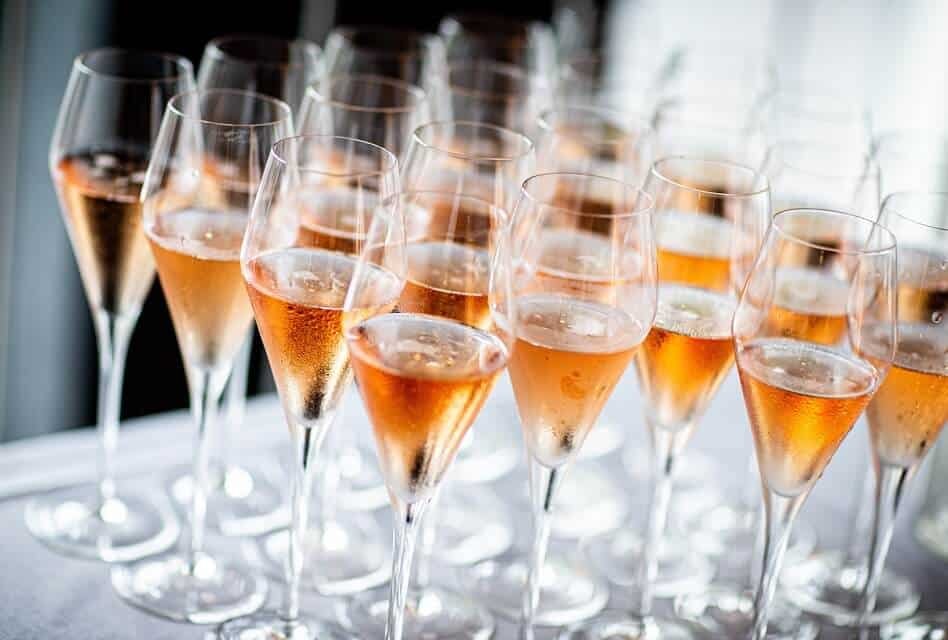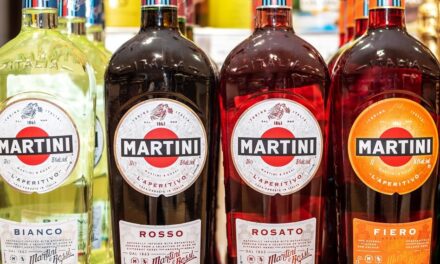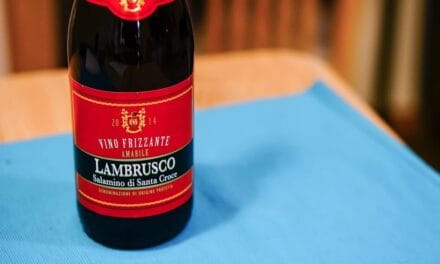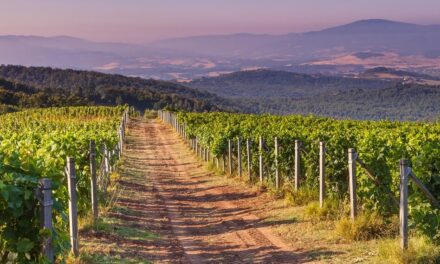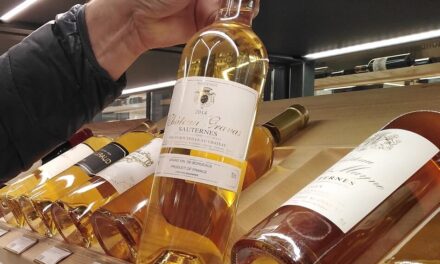Franciacorta is a high-quality sparkling wine from the Lombardy region in Italy. It is either white or rosé, light-bodied, dry, and high in acidity. Typically, it features aromas of citrus and green fruit together with yeasty and nutty notes.
Like French Champagne and other high-quality sparkling wines, it is made by following the “Traditional Method”. Franciacorta has DOCG status, which is the highest quality label for Italian wines.
What Does Franciacorta Mean?
The name Franciacorta was mentioned for the first time in 1277. Historians believe it derived from the Latin words “curtes francae”. These words referred to the tax- and duty-free trading between the numerous autonomous city-states in the region by that time.
WHAT IS FRANCIACORTA WINE MADE FROM?
According to DOCG laws, Franciacorta producers can only use grapes grown within the territory to make their sparkling wines. Traditionally, only three varietals were allowed:
- Chardonnay, a white varietal
- Pinot Bianco, another white grape
- Pinot Noir (Italian name: Pinot Nero), a red varietal
Lately, lawmakers also allowed vintners to use the local variety Erbamat, a late-ripening white grape.
WHERE IS FRANCIACORTA MADE?
Franciacorta comes from the Lombardy region in Northern Italy. More specifically, its home is the province of Brescia which is defined by Lago d’Iseo (English: Lake Iseo) in the north, the river Oglio in the west, and the city of Brescia in the southeast. Only vintners in 19 communes within this area may produce the sparkling wine:
- Adro
- Brescia
- Capriolo
- Cazzago San Martino
- Cellatica
- Coccaglio
- Cologne
- Corte Franca
- Erbusco
- Gussago
- Iseo
- Monticelli Brusati
- Ome
- Paderno Franciacorta
- Paratico
- Passirano
- Provaglio d’Iseo
- Rodengo Saiano
- Rovato
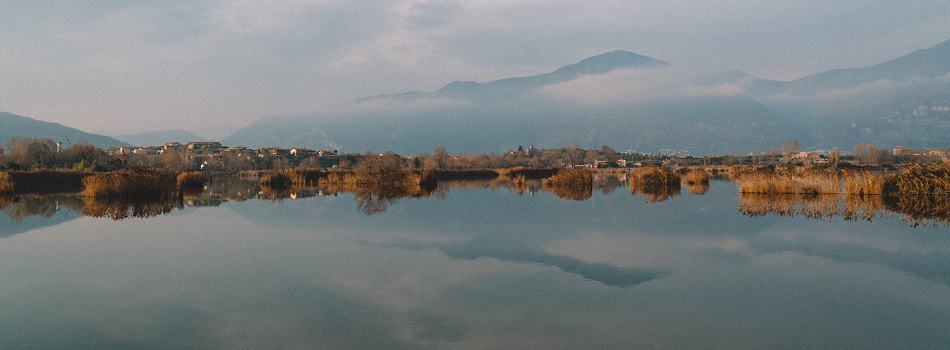
Lake Iseo in the Lombardy Region, Italy
The region provides excellent conditions for growing sparkling wine grapes. During the days, warm air comes from the Po river plain in the south, and the alps just north of the region keep it inside the area. But at night, colder streams from the higher altitudes of the mountains cool down the vines. This interplay of hot and cold air is perfect for the grapes’ ripening while preserving their acidity.
The proximity to the alps has another advantage: A long time ago, the area was covered by glaciers. And over the centuries, these glaciers moved back and forth and took limestone, gravel, and sand with them. Today, these materials are vital to the region’s well-draining soils that contribute to uniquely expressive wines.
HOW IS FRANCIACORTA MADE
The rules for making Franciacorta are very strict, and in many aspects, they are similar to the regulations for producing Champagne.
>Harvesting the grapes for the Italian sparkler can only happen from the second week of August until the beginning of September. Temperatures during that time are crucial. When it’s too hot, workers have to speed up the harvesting, so the grapes don’t become overripe.
After pressing the grapes, the vintners let the juice ferment for the first time. Then, they blend the resulting still wines to create the base wine for the second fermentation. This second phase, bottle fermentation, is the core of the “Traditional Method”, which is also the way to make Champagne. The base wine is filled into bottles, and the winemakers add a mix of yeast and sugar to restart fermentation. As the bottles are sealed, the carbon dioxide created during the fermentation cannot escape. Instead, it forms the fine bubbles that are typical for Franciacorta wines.
At some point, the yeast cells don’t find sufficient nutrition anymore and die. But the production process doesn’t end at this point. The wines age further in the bottle for at least one and a half years. Many vintners even extend this “on the lees”-aging to produce more complex styles.
To remove the dead yeast cells from the bottles, the workers riddle them. That means they place them upside down and gently shake them repeatedly. This process moves the yeast into the bottleneck, which then is frozen. When the workers open the bottles, the pressure inside forces the frozen yeast out.
Next, the vintners add the dosage, a mix of wine and sugar, to determine the wine’s sweetness. Finally, they reseal the bottles, and the Franciacorta wine is ready for sale.
THE DIFFERENT STYLES OF FRANCIACORTA
Despite the strict production rules, vintners may produce several types of sparkling wines that they can label Franciacorta:
- The most common style is the Cuvée style. It’s a blend of Chardonnay, Pinot Noir, and in some cases, Pinot Bianco or Erbamat.
- In contrast, Blanc-de-Blanc (English: White of Whites) wines are purely Chardonnay.
- Franciacorta Satèn (English: silk) is also 100% Chardonnay. When starting the second fermentation, winemakers add about 20 to 30% less sugar to the liqueur de tirage. Thus, the final wine has less alcohol and also less carbon dioxide, making it a semi-sparkling wine. Satèn wines are always brut.
- Finally, Franciacorta Rosé is made from the same varietals as Cuvée wines. It has to contain a minimum share of 35% Pinot Noir, though.
Besides the used varietals, you can also categorize Franciacorta wines by their age. Vintners have to mature all styles for at least 18 months in the bottle, but in many cases, they go way beyond this time:
- Single vintage wines called Millesimato age on the lees for a minimum of 30 months.
- Bottles labeled as Riserva (English: reserve) mature for at least 60 months.
HOW TO SERVE FRANCIACORTA SPARKLING WINE
Franciacorta is excellent for a toast. But you can also enjoy it with food, and surprisingly, it can work with every course of your meal.
When serving it, you have to ensure that it comes at the right temperature. Also, use proper glassware so the wine can showcase its aromas and preserve the delicate bubbles.
What Is the Optimal Serving Temperature for Franciacorta?
Franciacorta’s optimal serving ranges from 43 to 46°F (6-8°C). Riserva and vintage styles are exceptions. Serve them slightly warmer at 46 to 50°F (8-10°C).
Before serving, put the bottle into your regular fridge for about 30 minutes. To keep it chilled while you enjoy the wine, consider an ice bucket filled with 50% cold water and 50% ice.
What Is the Best Glass for Franciacorta?
The best glass for Franciacorta wines is a tulip-shaped sparkling wine glass. Its bowl looks like a top-down pear, connected to a long stem. With this unique shape, the glass can perfectly showcase the crisp freshness of high-quality sparkling wines.
The widest part of the glass is the top part. It allows you to smell even the most subtle aromas better than a standard flute.
If you do not own these particular glasses, a standard Champagne flute is the second-best choice regarding glassware.
Should You Decant Franciacorta?
Franciacorta wines typically do not need to “open up” to release their delicate aromas; thus, decanting is unnecessary. It might even be harmful because, during decanting, the fine bubbles disappear.
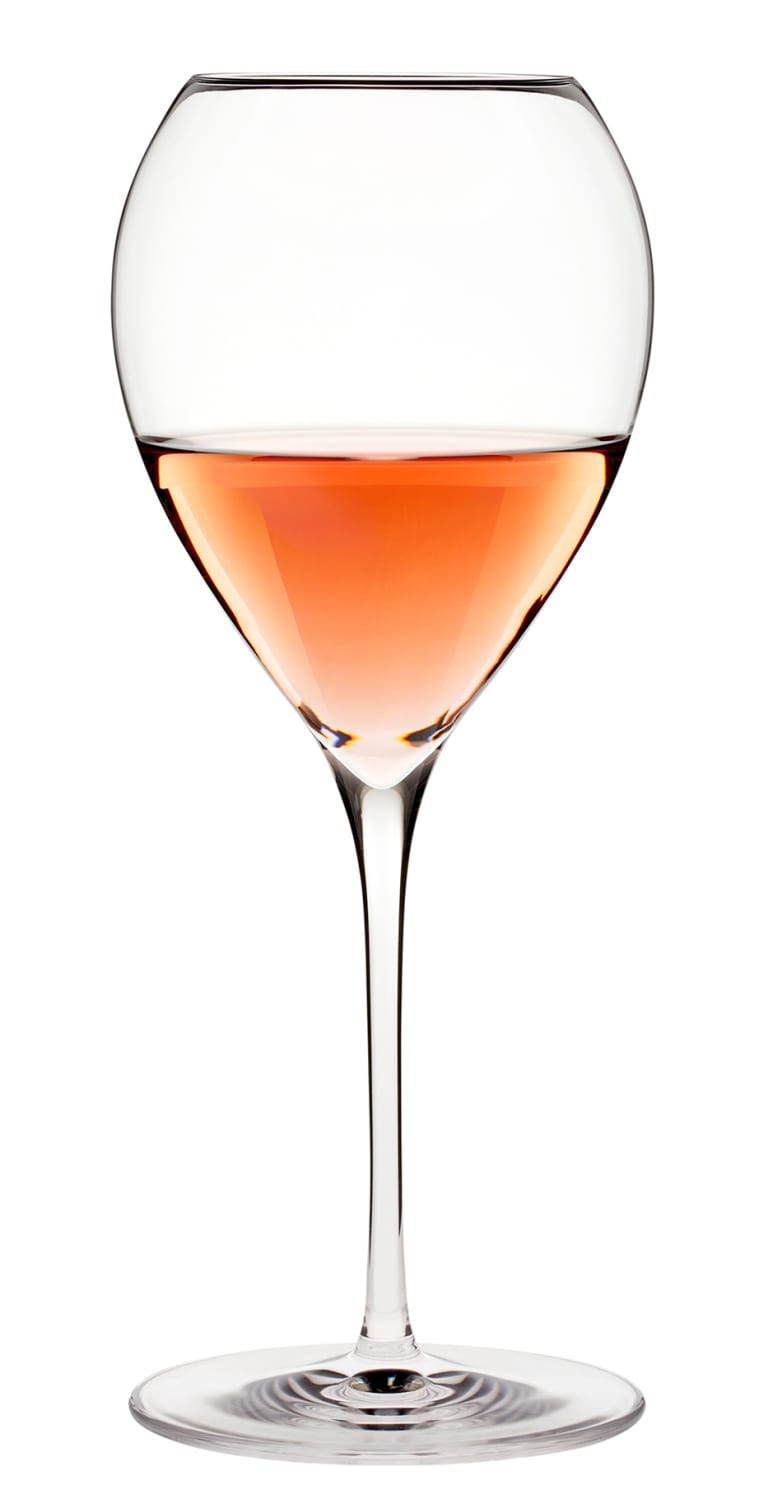
Crisp & Fresh Flavor First Wine Glasses
(Set of 6)
$59.99
from: Wine.com
HOW TO STORE FRANCIACORTA
Franciacorta needs a dark and cool place. A room in the basement or -even better- a wine fridge is fine. Shield your bottles from aggressive smells (heating oil, wall paint, cleaning agents) and vibrating devices (air conditioning, electric tools).
How Long Does Franciacorta Last When Open?
Leftover Franciacorta will last for about 2 to 3 days when you reseal the bottle properly and store it in a fridge. To be safe, best consume it the next day, though.
Can It Go Bad?
Franciacorta can go off when exposed to high temperatures (or sudden temperature changes), sunlight, or vibrations. You will typically smell vinegar-like aromas if that happens. If the sparkling wine tastes flat, that might also be a sign that it isn’t enjoyable anymore.
Can Franciacorta Be Aged?
Franciacorta wines cannot be aged. After maturing in the bottle for up to 60 months, they have reached the top of their potential. So when you buy a bottle, it is ready for consumption and will not get perceivably better over time. Nevertheless, you can store it for up to 10 years without the risk of ruining it.
HOW DOES FRANCIACORTA TASTE?
Franciacorta wines are dry, light-bodied, and highly acidic. You might find off-dry variations, too, but these are very rare. Typically, they feature citrus and green fruit flavors elegantly combined with nutty and yeasty notes.
When drinking Satèn styles, you can also sense the aromas of toasted almonds, dried fruits, and floral notes.
Riserva wines are even more complex, with hints of spices and biscuits.
FRANCIACORTA AND FOOD PAIRING
Franciacorta can match every course of your dinner. For instance, a Rosé style is delicious with soups, including fish soup and vegetable soup.
When it comes to the main course, the Italian sparkler is an excellent pairing for many seafood dishes. Especially light white fish such as pike or halibut is a great choice. The same is true for shellfish, for example, lobster or scallops, particularly when it comes as an ingredient in pasta or risotto dishes.
You can enjoy a rich vintage style with creamy white meat dishes. In particular, spicy and fried preparations are fantastic matches because the wine’s delicate bubbles tune down their heat and can cut through the coating.
If you want to try an off-dry (demi-sec) Franciacorta wine, pair it with a dessert that is not too sweet, like a fruit salad or a cream tart. In case, you prefer a cheese platter to finish your dinner, pair a dry wine with a soft ripe cheese such as Brie.
FRANCIACORTA SHOPPING TIPS
Franciacorta is a protected name, so when you find an Italian bottle carrying the label, it is an original for sure. Expect to pay at least 25 USD for an entry-level bottle. Vintage wines are available from 35 USD.
Here are some bottles to try:
Le Marchesine Franciacorta Brut
- type: white, sparkling, Cuvée
- origin: Lombardy, Italy
- varietal: Chardonnay, Pinot Blanc, Pinot Noir
- alcohol: 12.5%
Berlucchi '61 Franciacorta Nature 2012
- type: white, sparkling, Cuvée Vintage
- origin: Lombardy, Italy
- varietal: Chardonnay, Pinot Noir
- alcohol: 12.5%
Ferghettina Franciacorta Milledi Brut 2015
- type: white, sparkling, Cuvée Vintage
- origin: Lombardy, Italy
- varietal: Chardonnay
- alcohol: 12.5%
Barone Pizzini Saten Franciacorta 2014
- type: white, sparkling, Satèn Vintage
- origin: Lombardy, Italy
- varietal: Chardonnay
- alcohol: 12.0%
Contadi Castaldi Franciacorta Rosé
- type: rosé, sparkling
- origin: Lombardy, Italy
- varietal: Chardonnay, Pinot Noir
- alcohol: 12.5%
Le Marchesine Franciacorta Brut Rose 2016
- type: rosé, sparkling, Vintage
- origin: Lombardy, Italy
- varietal: Chardonnay, Pinot Noir
- alcohol: 13.0%
FINAL WORDS
Everyone knows Champagne, but only a few people are aware that Italy produces a similarly great sparkler. All lovers of bubbly wine definitely should check out Franciacorta. It might be hard to find in the United States, but if you can get your hands on a bottle, grab it and enjoy!

